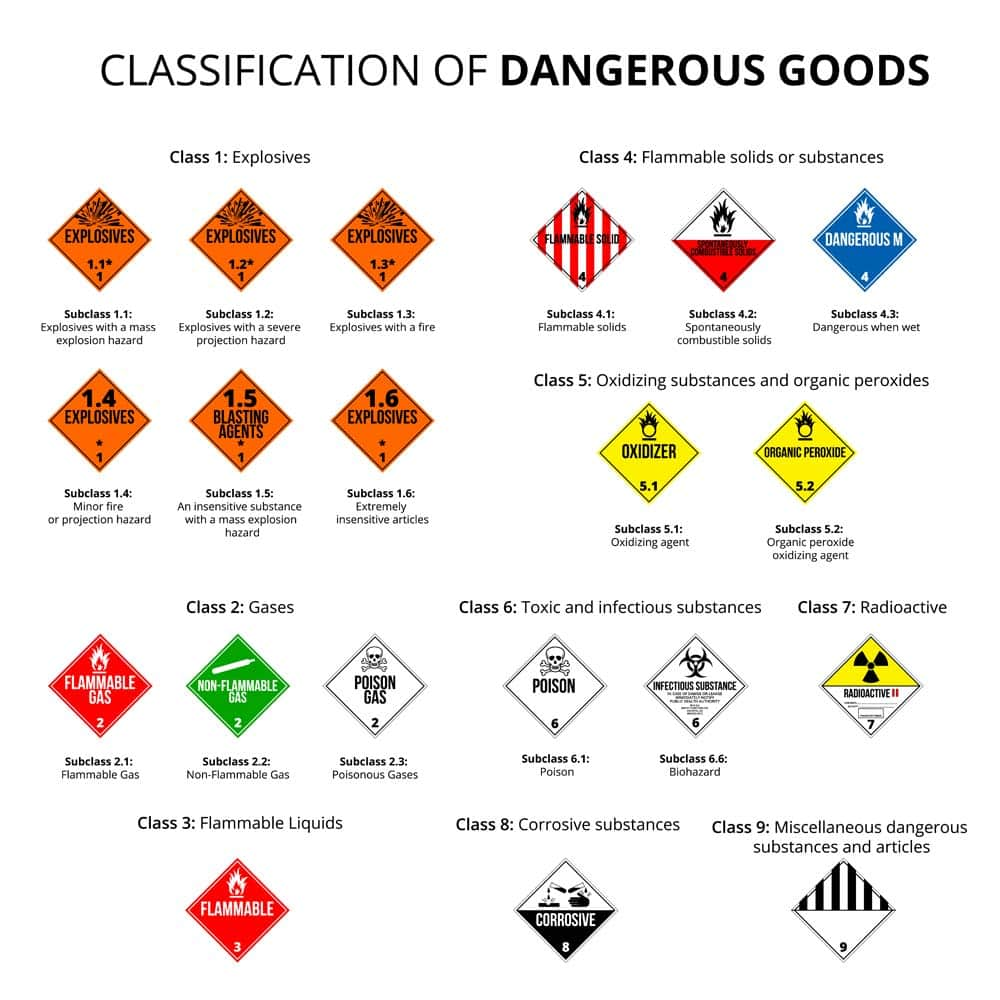DOT HAZMAT Shipping Key Definitions
What are the DOT HAZMAT Shipping Key Definitions?
Dangerous goods: Interchangeable with the term "hazardous materials" and mainly used in connection with air shipments of regulated materials.
Hazardous Materials: Substances or materials that the Secretary of Transportation has determined to be capable of posing an unreasonable risk to health, safety, and property when transported in commerce. Examples of hazardous materials used on campus include laboratory reagents, pool chemicals, lubricating oils, paint, batteries, infectious substances, dry ice, and hazardous wastes.

Hazardous Materials Employee: A person who, in the course of full time, part time, or temporary employment, directly affects hazardous materials transportation safety. A person who loads, unloads, handles, prepares (identifies, classifies hazardous materials, packages, marks, labels, or documents) hazardous materials packages, including the preparation of shipping papers, tenders hazardous materials into commerce, or who otherwise transports hazardous materials shipments. DOT training online is required within 90 days of the job assignment.
Hazardous Materials Employer: An employer (including a state agency) who employs or uses at least one hazardous materials employee on a full time, part time, or temporary basis, who transports hazardous materials in commerce; causes hazardous materials to be transported in commerce; or designs, manufactures, fabricates, inspects, marks, maintains, reconditions, repairs, or tests a package, container, or packaging component that is represented, marked, certified, or sold by that person as qualified for use in transporting hazardous materials in commerce. DOT training online is required within 90 days of the job assignment.
Hazardous Materials Regulations: Department of Transportation regulations governing the transportation of hazardous materials in commerce (within the jurisdiction of the United States, for shipments to, from, and through the United States) are found in 49 CFR parts 171 through 180. The movement of regulated materials within contiguous University property does not constitute a shipment in commerce.
Who is a Hazardous Materials Shipper?: An individual, corporation, company association, firm, partnership, society, joint stock company, or a government, state agency, tribe, or authority of a government or tribe that offers a hazardous material for transportation in commerce or transports a hazardous material to support a commercial enterprise, other than the U.S. Postal Service. Hazardous material shippers identify, classify, package, mark, label, document, and/or tender a hazardous material into transportation. DOT training online is required within 90 days of the job assignment.
What are the High Risk Hazardous Materials?:
- Radioactive material;
- Explosives;
- Materials poisonous by inhalation;
- Bulk hazardous materials shipments;
- Select agents or toxins regulated by the Centers for Disease Control & Prevention or
- the US Department of Agriculture; or
- A quantity of hazardous materials that requires placarding.
International Air Transportation Association (IATA): This organization works closely with governments in the development of regulations governing air shipment of hazardous materials. Materials of Trade: Hazardous materials, other than hazardous waste, that are carried on a motor vehicle to directly support a principal business. Examples include landscaping, pest control, painting, plumbing, and welding. Employees handling materials of trade must have general knowledge of relevant regulations, quantity limitations, and packaging and labeling requirements.
Regulated Materials: Hazardous materials that pose an unreasonable risk when transported in commerce. Also known as materials "Regulated for Transportation." Shipping: The process whereby a hazardous materials employee identifies, classifies, packages, marks, labels, documents, and tenders the hazardous materials shipment to a transport carrier.
Transportation: The movement of property, including the loading, unloading, or storage incidental to that movement.

